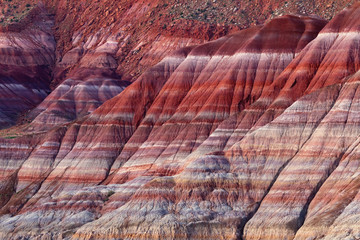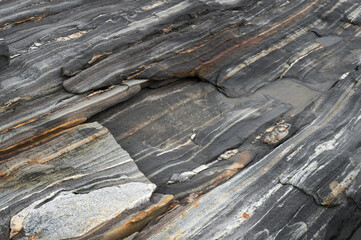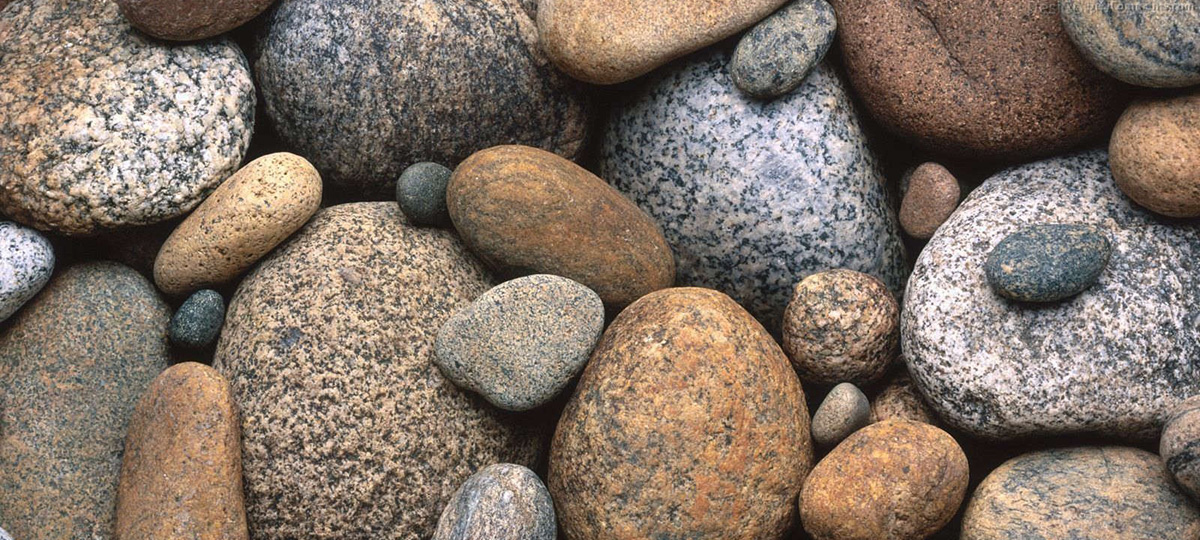Rocks are naturally occurring, solid aggregates of minerals that make up a significant portion of the Earth’s crust. They are formed through various geological processes over millions of years and provide valuable insight into the history of the Earth.
There are three main types of rocks: igneous, sedimentary, and metamorphic. Each of these rock types has a unique composition, texture, and formation process.
Igneous Rocks
These rocks are formed from the solidification of molten rock material (magma or lava) and can be further classified into two categories based on their location of formation. Extrusive igneous rocks form on the Earth’s surface when lava cools and solidifies quickly, resulting in fine-grained texture. In contrast, intrusive igneous rocks form when magma cools and solidifies beneath the Earth’s surface, producing a coarser texture. Examples of igneous rocks include granite, basalt, and pumice.

Igneous Classes
- Intrusive:
Igneous rocks that form beneath the Earth’s surface due to the slow cooling of magma. Examples include granite and gabbro. - Extrusive:
Igneous rocks that form on the Earth’s surface due to the rapid cooling of lava. Examples include basalt and pumice.
Sedimentary Rocks
These rocks are formed from the accumulation and compaction of sediment (such as sand, mud, and shells) over time. They are typically layered and can contain fossils or other evidence of past environments. Sedimentary rocks are often found in areas such as riverbeds, beaches, and shallow seas. Examples of sedimentary rocks include sandstone, limestone, and shale.

Sedimentary Classes
- Clastic:
Sedimentary rocks that form from the accumulation and lithification of rock fragments, such as sandstone and shale. - Chemical:
Sedimentary rocks that form from the precipitation of minerals from water, such as limestone and rock salt. - Organic:
Sedimentary rocks that form from the accumulation and lithification of organic matter, such as coal and some types of limestone.
Metamorphic Rocks
These rocks are formed from the alteration of existing rocks through heat, pressure, or chemical reactions. Metamorphism can occur deep within the Earth’s crust or at the surface, and the degree of alteration depends on the intensity of the metamorphic process. Examples of metamorphic rocks include marble, slate, and gneiss.

Metamorphic Classes
- Foliated:
Metamorphic rocks that have a layered or banded appearance due to the alignment of minerals, such as slate and gneiss. - Non-foliated:
Metamorphic rocks that do not have a layered or banded appearance, such as marble and quartzite.
While rocks are made up of different minerals, the minerals that compose a rock can have a significant impact on the rock’s properties. For example, rocks that are composed of minerals with strong bonds (such as quartz) are typically harder and more resistant to weathering than rocks composed of weaker minerals (such as clay minerals).
Geologists can use the composition, texture, and location of rocks to piece together information about past environments, such as climate, sea level, and tectonic activity. Additionally, rocks can be used as natural resources, such as building materials or as sources of minerals and metals.

Featured Posts
-

Rock Identification
Rock identification is the process of examining and analyzing a rock’s physical and chemical characteristics in order to determine its type, composition, and history. This …
-

Rock Cycle
The rock cycle is a geological process that illustrates the continuous transformation and interaction among the three major types of rocks: igneous, sedimentary, and metamorphic. …
-

Rock Basics
Rocks are naturally occurring, solid aggregates of minerals that make up a significant portion of the Earth’s crust. They are formed through various geological processes …
-

Mohs Hardness Scale
The Mohs Hardness Scale is a universally recognized tool used to classify the hardness of minerals based on their ability to scratch one another. Developed …
